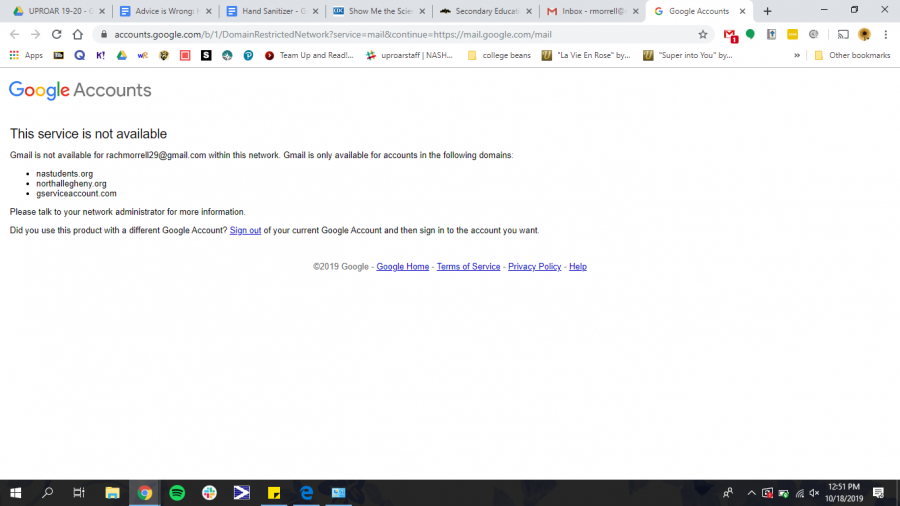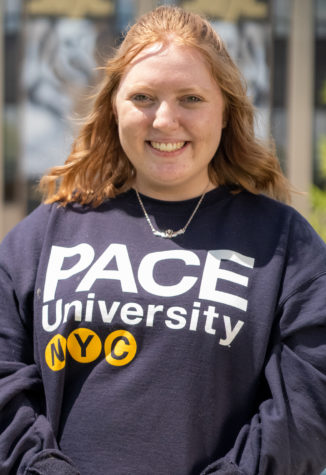You’ve Got (Inaccessible) Mail
School-issued laptops are a staple in students’ lives, but what happens when their daily online needs are blocked?
If this screen looks unfamiliar to you, try accessing your personal gmail from school.
October 18, 2019
Last week, students throughout the district noticed something new about their laptops — quite by surprise, personal email accounts were now blocked. For years, we’ve acclimated ourselves to a climate of Securly-blocked websites, but a week ago many of us felt as though the district had gone too far.
Between my job, volunteering, and my activities, I get many daily emails that I make a conscientious effort to respond to in a timely manner. Using my laptop is a the primary factor in what makes my responses so proficient. In the off chance that teachers give us a couple of minutes at the end of class, I often use this time to check my email and respond to new ones. With the school’s new policy, however, waiting for breaks in the day to stay on top of my inbox is simply not feasible.
Needless to say, using a system like Securly that filters out dangerous websites is a necessity to maintaining structure in our school environment. Ever since 2015, when NA issued laptops to students in grades 9-12, high schoolers at North Allegheny have relied heavily on technology both in and out of the classroom, from assignments and homework to more personal issues like emails. Blocking websites that could potentially distract students from education, like Instagram and Twitter, is possibly justifiable.
Some websites, on the other hand, aren’t distracting, but rather help students with preparing for their futures. For instance, NA students commonly create separate email accounts with the Common App in order to apply to colleges without the fear of spamming their personal or school email accounts. But with the school’s new email policy, many students have been left high and dry when it comes to such practical measures.
Since elementary school, the district’s mission has been to educate all students on creating a safe online presence, from in-class discussions and school assemblies to digital citizenship assignments. Blocking access to our personal email accounts feels demeaning and certainly does little to equip us for the real world.
The Children’s Internet Protection Act, enacted in 2000, and requires American public schools to filter out potentially harmful websites — though many schools have taken these restrictions far beyond the required limits. Every single one of my friends at North Allegheny has been inconvenienced or even troubled by the growing list of blocked sites, and most are ready for a resolution to be made. At the very least, perhaps an advanced notice from the administration could have prepared us for the trouble that has resulted from the sudden blockage of personal gmail account.
As every student knows but won’t publicly admit, installing a VPN is the most effective way trying to circumvent the tech restrictions the district has set into place. Sure, it’s against school policy, and some won’t use VPNs out of fear of being caught. But when a student truly needs to access a blocked site, sometimes the rule seems less important than the reality.
It comes down to a question: Would the school rather incentivize students to download VPNs, or would they rather ease up on the restrictions and allow for more space in students’ online activities? The debate has been raging for what feels like years, but the issue didn’t hit home for me until last week. Of course, schools must keep a constant eye on what students are viewing online. But must that mean that I have to wait until I get home to answer an email about my evening availability?












